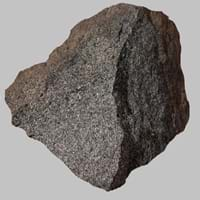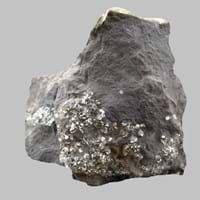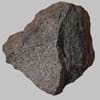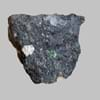Definition
Gabbro is an intrusive igneous rock which is chemically equivalent to plutonic Basalt
Argillites are highly compact sedimentary or slightly metamorphosed rocks that consist largely or wholly of particles of clay or silt but lack the fissility of shale or the cleavage characteristic of slate
Discoverer
Christian Leopold von Buch
Unknown
Etymology
From Latin glaber bare, smooth, bald
From Latin Argilla (clay) and -ite in English which became agrilla+ -ite = Argillite
Class
Igneous Rocks
Sedimentary Rocks
Sub-Class
Durable Rock, Hard Rock
Durable Rock, Soft Rock
Group
Plutonic
Not Applicable
Other Categories
Coarse Grained Rock, Opaque Rock
Fine Grained Rock, Opaque Rock
Texture
Phaneritic
Clastic, Polished
Color
Dark Grey to Black
Dark Grey to Black, Pink, Red, White
Durability
Durable
Durable
Scratch Resistant
Yes
Yes
Appearance
Veined and Shiny
Rough and Dull
Interior Uses
Countertops, Decorative Aggregates, Homes, Interior Decoration
Decorative Aggregates, Homes, Interior Decoration
Exterior Uses
As Building Stone, As Facing Stone, Garden Decoration, Office Buildings, Paving Stone
As Building Stone, Garden Decoration, Office Buildings
Other Architectural Uses
Curbing
Curbing, Whetstones
Construction Industry
As Dimension Stone, Building houses or walls, Cement Manufacture, Construction Aggregate, for Road Aggregate
Used for flooring, stair treads, borders and window sills.
Medical Industry
Not Yet Used
Not Yet Used
Antiquity Uses
Artifacts, Monuments, Sculpture
Artifacts, Monuments, Sculpture
Commercial Uses
Cemetery Markers, Commemorative Tablets, Laboratory bench tops, Jewelry, Sea Defence, Tombstones
Fire resistant, Used to manufracture paperweights and bookends
Types
Not Available
Not Available
Features
Smooth to touch
Is one of the oldest rock
Archaeological Significance
Famous Monuments
Data Not Available
Data Not Available
Famous Sculptures
Data Not Available
Data Not Available
Pictographs
Not Used
Used
Petroglyphs
Not Used
Used
Formation
Gabbro, a mafic rock, forms due to cooling and crystallization of magma underneath Earth's surface.
An argillite is a fine-grained sedimentary rock mainly composed of clay particles which forms from lithified muds which contain variable amounts of silt-sized particles.
Mineral Content
Augite, Olivine, Plagioclase, Pyroxene
Biotite, Chlorite, Feldspar, Micas, Muscovite or Illite, Plagioclase, Pyrite, Quartz
Compound Content
Aluminium Oxide, CaO, Chromium(III) Oxide, Iron(III) Oxide, Potassium Oxide, MgO, Sodium Oxide, Silicon Dioxide, Sulfur Trioxide
Iron(III) Oxide, Potassium Oxide, MgO, Silicon Dioxide
Types of Metamorphism
Impact Metamorphism
Not Applicable
Types of Weathering
Chemical Weathering
Biological Weathering
Types of Erosion
Coastal Erosion
Chemical Erosion
Grain Size
Coarse Grained
Fine Grained
Fracture
Conchoidal
Conchoidal to Uneven
Streak
Black
White to Grey
Porosity
Highly Porous
Highly Porous
Luster
Not Available
Waxy and Dull
Compressive Strength
Not Available
Cleavage
Not Available
Slaty
Specific Gravity
2.86-2.87
2.56-2.68
Transparency
Opaque
Opaque
Density
2.7-3.3 g/cm3
2.54-2.66 g/cm3
Specific Heat Capacity
Not Available
Resistance
Impact Resistant, Pressure Resistant, Wear Resistant
Heat Resistant, Impact Resistant
Deposits in Eastern Continents
Asia
India, Russia
Bangladesh, China, India, Russia
Africa
South Africa
Ethiopia, Kenya, Morocco, South Africa, Tanzania
Europe
Germany, Greece, Italy, Scotland, Turkey
Austria, France, Germany, Greece, Italy, Romania, Scotland, Spain, Switzerland
Others
Greenland
Not Yet Found
Deposits in Western Continents
North America
Canada, USA
USA
South America
Brazil, Colombia, Venezuela
Bolivia, Chile, Colombia, Ecuador, Peru, Venezuela
Deposits in Oceania Continent
Australia
New Zealand, Queensland
New South Wales, New Zealand, Queensland, Victoria, Western Australia










